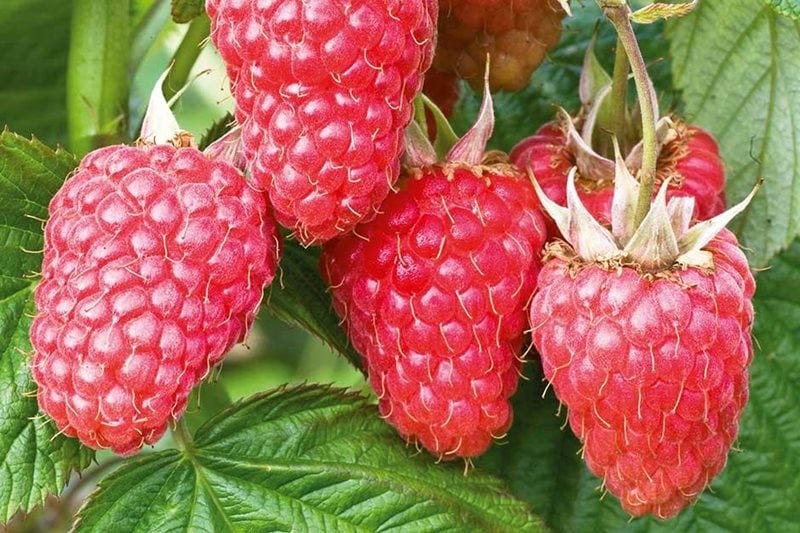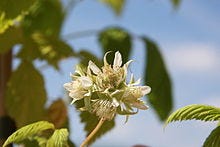Insects with cream and sugar your future? My past
A recipe for hazelnut meringue and raspberries cake
In the summers before we became squeamish teenagers, my sister and I ate maggots, with cream and sugar. Not deliberately, you understand. The tiny insects squirmed at the bottom of the raspberries we plucked from the canes in the netted cage of our father’s garden, raspberries never sprayed against winged and other invaders. If we had stomped on the berries containing these single white curls - there was only ever one in each, there would never have been enough raspberries to fill our summer bowls with the glories.
Raspberry maggots don’t seem to be among the 17 insects just approved by the Singapore government as safe for human consumption, the four crickets, two grasshoppers, one locust and single bee (drone not honey), plus, in their larval stage, three kinds of mealworm, one white grub and a giant rhino beetle grub, as well as silkworm moths and silkworms. Singapore is already ahead of the meat-replacement game, the first country to sanction cultured lab-grown meat and Solein, a fermented single-cell organisms powder. A quick glance at its map demonstrates just how vulnerable is its food supply.
There are 195 countries in the world. 128 of them eat insects, chowing down on around 2,205 species. Hundreds of different creepie-crawlies are consumed in Asian countries, followed by Central and South America, then several African nations, and ethnic groups in Australia and New Zealand. Japan, too, has seen an increase in entomophagy (insect eating) since 2013. The US, the UK and the EU? Don’t ask. The only pests that engage our concern are the ones that zoom into our cashmere collections.
Eighty percent of the world, says the Food and Agriculture Organization of the United Nations, is happy to eat something with more than four feet. Yet countries in the developed world anxious for a decrease in the eating of meat seem as reluctant to tackle consuming insects as insect-eating countries are eager to move on to eating cattle.
The EU says it’s in the process of approving a greater number of insects as “a novel food source”. But with a speed akin to the one it applies to ratifying nations wishing to join the European Union, so far it has given the OK to only four. Australasia is moving at a similar pace, endorsing one cricket and two kinds of mealworm as “non-novel, non-traditional” food sources.
Climate-wise, it is (forgive me) crunch time. Insects are a far more sustainable source of protein than livestock. Plus, do their spooky looks put you off prawns, shrimps, crawfish and crevettes grises? Insects are just as delicious as each of those. I know whereof I speak: I’ve eaten Ant Egg Soup in Laos, and grasshoppers and locusts and bugs and more that are creepy but not crawly (rat, snake, guinea pig and other pets), all across South East Asia and South America.
My sister and I could never understand how the tiny white commas got into our raspberries - or into father’s apples, even more popular habitats. But it seems that from May until the middle of July, brown beetles lay eggs on the fruit blossoms. From these hatch larvae which begin to feed at the stalk-end of the developing fruit then make their way inside. Those that weren’t consumed by our family returned to the soil at the end of summer to pupate and repeat the process with the following year’s crop.
Raspberries have history. Archaeological evidence shows that far from gnawing exclusively on raw animals and roots, Palaeolithic Man also dined off raspberries. Perhaps with cream, if you read last week’s Tabled, and probably with maggots.
Their name may come from raspise, ‘a sweet rose-coloured wine’ from vinum raspeys, or from raspoie, a word of German origin meaning ‘thicket’, which any raspberry picker will appreciate. Native to Europe and northern Asia, raspberry cultivation was documented by 4th century AD Roman writer, Palladius, in his book on agriculture, Opus agriculturae. In the 13th century, King Edward I of England is credited with encouraging their growth across the country. However, raspberries only gained widespread popularity much later, after they were hybridized and improved by French and English growers during the 17th and 18th centuries. Today, there are over 200 varieties. In 2022, world production of raspberries was recorded at 947,852 tonnes, with Russia providing 22 percent of the total.
I don’t know about you, but I prefer raspberries to strawberries. Their complex scented flavour is as seductive, as sophisticated as Chanel No5, less exuberantly brash than the flouncy taste of strawberries. The best in Britain, I hazard to propose, come from Scotland, which provides the majority of raspberries to British supermarkets, and where the cooler and damper summer climate promotes their growth - to the point where they are as invasive in the wild as are blackberries. 15,000 cultivated tonnes come from the Tayside region of eastern Scotland alone. A similar climate makes their US growth prolific in Oregon and Washington State.
Raspberries shouldn’t only be thought of in a pudding context. Raspberry vinegar was a short-lived 1980s fad. But as with blackberries, they make a fine sauce that cuts into rich game such as duck, grouse and guinea fowl. There are even recipes for one to serve with turkey. (Only 134 days left for you to experiment before Thanksgiving.)

I shove handfuls of raspberries down the neck of an empty bottle, spoon in several tablespoons of sugar, then cover with a cheap vodka and stick in the back of a cupboard for several months but as long as possible, to create a wonderful Cassis-like liqueur to lengthen with a chilled Crémant or to sip on its own or pour over lemon sorbet. But I resist making raspberry jam because it’s indisputably the best in the preserves canon (apart from damson jam or maybe apricot: discuss) and I would live the rest of my life exclusively on thick slices from white cottage loaves, lashings of farmhouse butter and slatherings of the stuff. (Pub quiz question: the difference between a conserve and a preserve? The latter contains whole or chunks of a single fruit. Conserves are made from a mixture.)
If I were to select one last pudding on earth, it would probably be this Austrian classic, a praline-flavoured meringue cake with a raspberries-and-cream filling. I made this one on a day of high humidity so the meringue slumped. But tasted stratospheric so no-one cared.
125g/4oz shelled hazelnuts
5 large egg whites
300g/10 oz caster/superfine sugar
300g/10 fl oz double/heavy cream
250g/8oz raspberries
Preheat oven 150C/300F.
Put the nuts on a baking sheet and bake 10 minutes till pale brown. Cool then rub off the skins in a tea towel and dump into a processor and pulse into a rough powder.
Raise the oven to 180C/350F.
Whisk the egg whites till stiff then add the sugar a tablespoon at a time while whisking. Fold the nuts gently into this.
Line two 20-30cm/8-9in pans with baking parchment and spread the mixture evenly between the two. Bake 35-40 minutes then remove and leave to cool in their pans.
Whip the cream and either fold in the fruit and spread over one of the meringues or spread the cream alone then sprinkle the raspberries over it, then set the other meringue over the top then serve.





Cobnuts and hazels are ripening now and I’m picking raspberries daily. Serendipitously you shared this recipe! Thank you
Raspberries are INFINITELY SUPERIOR to strawberries. I have never met a chocolate cake/mousse/brownie recipe that wasn't improved by a last minute addition of fresh raspberries folded in before baking/setting.